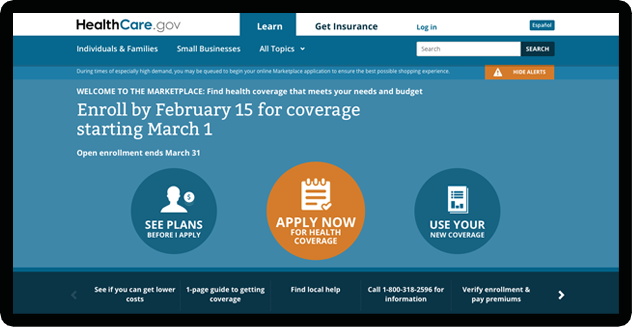
Money can’t buy love, so I’ve been told. But guess what, it can’t buy a functioning website either? Okay, we know the healthcare.gov website doesn’t work, it’s a bad user experience, oh wait, there’s no user experience at all, and that in spite of there being thousands of websites around the world with more monthly traffic, this site can’t handle squat. So much for "Give me your tired, your poor, your huddled masses yearning to breathe free…” You bet people are tired, tired from a poorly developed website and massively peeved.
So much for "Give me your tired, your poor, your huddled masses yearning to breathe free…”
So, what can small and mid-size business learn from this catastrophe? Probably the same thing Michael Bilandic, Chicago’s mayor in 1979, learned after 36” of snow fell and wasn’t removed for days on end. The big things will always be there for strife and conflict, but it’s the little things that will sink you. He lost to Jane Byrne because of a snowstorm – although in the case of the healthcare.gov site, it’s more like a firestorm.
Look, technology is everything, it’s war and it’s peace, it’s transportation, education, commerce, labor, homeland security, agriculture, energy – you get the idea. If you don’t think a digital prophet is needed in the cabinet, think again. It’s mind-boggling to think we can build a stealthy bomber or explore outer space, but the government can’t build a website. And not just this site, nearly all of their sites lack the basics of good design, a favorable user experience, compelling content, and an actual information architecture that makes sense to people who don’t live 12 stories below the surface in Roswell, New Mexico.
Here’s what we can all learn. Don’t go into your next website redesign project thinking it needs to be a footrace. If you don’t allow enough time on the front-end for research and discovery, and on the backend for usability testing and bug abatement, good luck. Don’t be a skinflint when it comes to making an investment in your website, saving a few grand can cost you 10 times that, no 100 times that, if it doesn’t function properly and short cuts were the workaround. It’s happening right in front of your very eyes and fingertips, people get downright angry when a site doesn’t work, they pass judgment immediately, they tell others, your competitors pick-up on it, and it spirals out-of-control.
Expert Project Management is essential; it’s the price of admission for a well done website. Did you see the congressional hearings, the finger pointing, the independent contractors blaming each other? Make certain the Project Manager for your new site has years of experience, has worked with thousands of stakeholders, has a portfolio of dozens or even a hundred websites that they’ve managed. And always remember this, in the web world, don’t send a boy to do a man’s job. I can’t begin to count the sites we’ve developed less than one year after someone else developed them. It happens all the time.
Finally, and I’m overstating the obvious, go to someone that does this for a living. Here’s what CGI, the company hired to develop the healthcare.gov website, says about themselves:
At CGI, we're committed to helping all of our stakeholders succeed. Our 69,000 professionals in 40 countries across the Americas, Europe and Asia Pacific provide end-to-end IT and business process services that facilitate the ongoing evolution of our clients' businesses. CGI is committed to helping our clients achieve their business goals; to providing our professionals with rewarding careers; and to offering shareholders superior returns over time. At CGI, we are in the business of delivering results.
Excuse me, where’s the reference to building websites? They’re an IT company, not a digital strategy firm; they don’t design, develop or provide user design experience strategies for websites. Oh, and by the way, have a look at CGI’s website. It stinks.